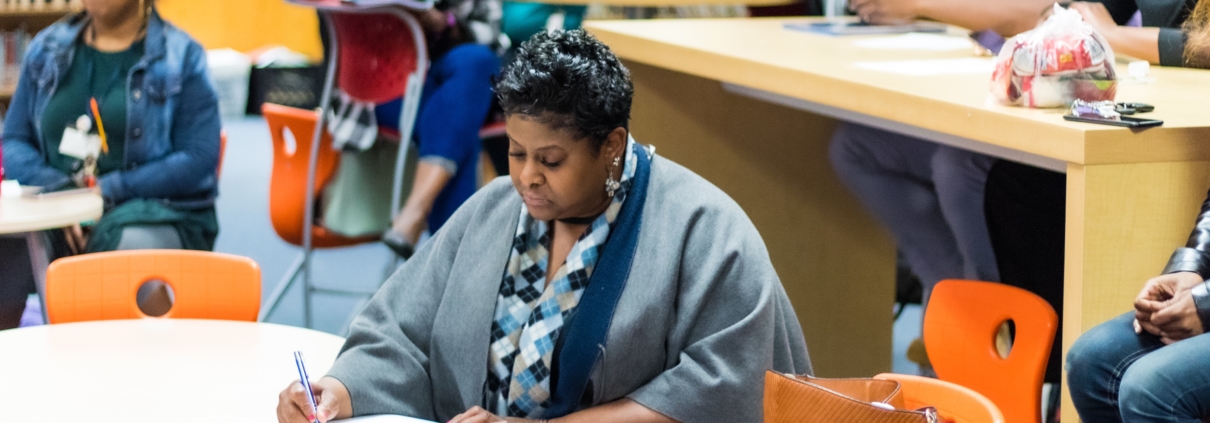Many aspects of the education system look different this year. Family engagement and empowerment efforts do not. At the core, family engagement and empowerment looks the same, just virtual and socially distanced. Our family engagement efforts are still focused on ensuring families have power, ownership and feel confident advocating for their child. They’re still focused on creating channels for families to connect with the resources they need and have the support they need to actively support their student’s learning.
This isn’t to say that the education landscape doesn’t look drastically different. When COVID-19 caused schools to abruptly shut their doors (as well as after school programs and childcare centers), educators had to hastily shift to remote and virtual learning. This shift in many instances has jeopardized the progress and success of students, primarily those coming from under-resourced families.
Working with seven schools and approximately 4500 families across Charlotte, NC ranging from elementary to high school, we’ve observed that family engagement and empowerment efforts look nearly identical to pre-pandemic efforts. Yes, we’ve shifted invitations to Zoom rooms, but we’re still asking families what they need to be successful and answering with the resources and connections they need to thrive and to best show up for their student(s).

Families browse community partners and celebrate student work at a Jan. 2020 Family Empowerment Night.
Just like in past years, we supported schools to administer a pre-survey to gauge families’ feelings toward their school related to engagement and empowerment, understand what resources they need, and provide feedback on how schools could best support them through navigating living and learning during a pandemic. Surveys were primarily distributed electronically, a shift from past years where families were given the choice of either a physical, paper survey or electronic. From 710 pre-survey responses, this is what we learned are the top 3 areas of need.
#1. Academic support and tutoring – Families have consistently requested academic support over the years, but this year’s survey results yielded a surge in requests for tutoring. This request is coming more frequently for the subject area of math. Families are also requesting more information on how they can support their students through remote learning.
#2. Physical health and exercise – This category of need represents a stark change in feedback from pre-pandemic survey results. Families, now more than ever, are seeking resources and support to maintain their health, and get active. The pandemic has heightened awareness of health and wellness, and increased demand for movement-based activities.
#3. Job training opportunities + mentorship – Families have routinely requested connections to job training and job opportunities, this year shows an increasing focus on support in areas such as mentorship, and resume and interview support.
Response + Programming
In previous years, a primary focus of family engagement and empowerment efforts has been planning programming in-person at schools. This approach has shifted to planning virtual programming, but the essence of these events have remained the same: empowering families to support their student’s success by providing the necessary knowledge, communication channels, and access to resources to help families achieve economic and social equity through education. SchermCo is anticipating supporting our seven partner schools with an average of four events per school, or around 28 virtual, family-focused programs.
To put this into more concrete terms, a sample program:
- Families are invited to 45-minute to 1-hour grade-level specific virtual events
- Teachers prepare 30-40 minutes of programming focused on a specific topic area such as understanding your student’s data and goal-setting. Families are provided with easy to apply tips, and any resources to support.
- Teachers incorporate interactive elements to showcase technology platforms used with students and help families better understand how they can support their students
- The virtual event is finished with community partner connections. This is being executed in two-ways: Community partners (such as job training partners like Goodwill, and financial literacy partners such as Commonwealth) to join live to connect with families, or having community partners prepare a short introduction video that highlights services provided and how to connect.
We have found a couple of silver-linings of virtual programming that were previously perceived as challenges.
No wasted transition time – in-person events created invaluable connections between families, students and staff, however time taken to transition between rooms was often lengthy and detracted from the amount of time dedicated to content-rich programming. The virtual environment has eliminated bulky transition times and allows for a more efficient event experience.
Creating equal opportunity for families with conflicts and multiple students – Considering the needs of families with multiple students or conflicts with the event time was often perceived as a challenge. It’s hard for families to be in two places at once! It is now easy to record and distribute the content from grade-level sessions to families so that they can easily tune-in at a later time.

Students and families interact with a community partner at an in-person Family Empowerment Night in 2019.
The cornerstone of planning an in-person or virtual event has been, and remains, “Knowledge is power.” Providing families with expectations, the know-how to navigate technology platforms they’re being asked to keep up with, direction on how to connect to teachers and outside community partners, and more. Without insight into what’s happening or what opportunities are available families can’t use their voice to advocate for their students or their families.
Now, with physical school doors closed for students and families for 10 months and counting, it is more important than ever to create open, two-way communication channels for families. We’ll be supporting schools to create surveys, exit tickets, and inviting families to important decision-making meetings. When families are offered a seat at the table, they are able to easily and frequently use their voices and offer feedback. In turn, schools can best meet family needs, strengthen relationships with students and families, and create the strongest community for their students.
As always, there’s more to do, and more to come.

